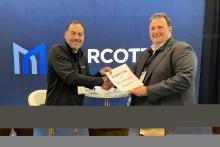
“I knew INFORM’s transport optimisation software and the benefits that come along with it from my previous activities in the building materials industry,” said Thomas Gaul, managing director at Ross Bauservice. “So the decision to use it here was a no-brainer.”
Ross Bauservice is a fast-growing, medium-sized company supplying aggregates and asphalt as well as topsoil and construction waste removal services to its customers in central Germany (Hessia and Rhineland-Palatinate area). The company operates a mixed fleet of its own trucks and external haulers.
“Since our dispatchers started to use INFORM’s algorithms during the transport planning and real-time phase, neither our customers nor my team has to worry anymore,” said Gaul. “New orders, cancellations, or delays at the constructions site – the system constantly updates our delivery schedule, making sure that all orders are fulfilled”.
Version 10 of INFORM’s transport optimisation software comes with an overhauled user interface and is powered by the latest aggregates optimiser, combining 25 years of know-how in the building materials industry with cutting-edge AI technology.
Virtual depots are also a new feature. Besides quarries, sandpits, asphalt mixing plants, and recycling yards, the software allows dispatchers to quickly set-up temporary depots and to include them into the transport planning.
“Our optimisation software isn’t just for the big players in the building materials industry,” explains Dr Paul Flachskampf, head of Road Transport at INFORM. “The project at Ross Bauservice shows that also companies with a fleet of less than 100 trucks can benefit from it, and you do not need an in-house IT crew to handle the technical complexity of such a project."
Flachskampf added: “We are using HERE maps for routing and geocoding; tracking is done via a WEBFLEET based telematics system, and a powerful, open-source PostgreSQL database handles data workloads."
INFORM’s transport optimisation software also has an interface to WDV2020, an ERP system that is widely used in the building materials industry. With a very tight project timeline, the go-live was in July 2020.










